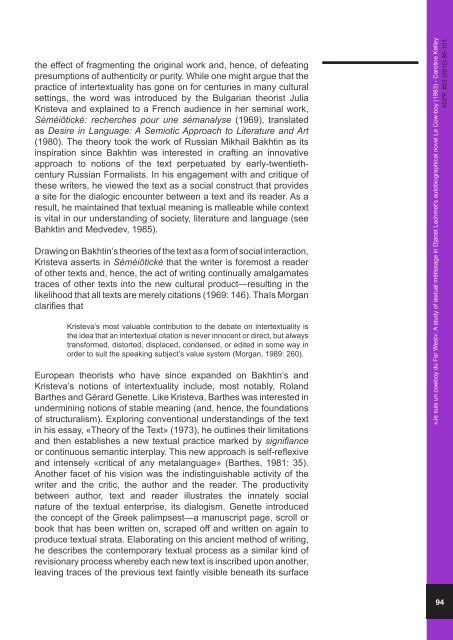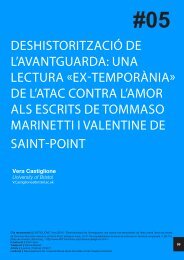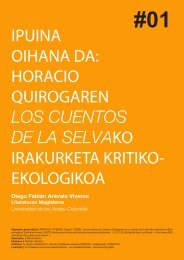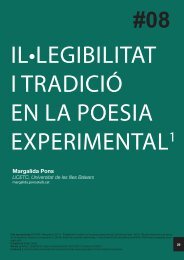03 - 452ºF
03 - 452ºF
03 - 452ºF
Create successful ePaper yourself
Turn your PDF publications into a flip-book with our unique Google optimized e-Paper software.
the effect of fragmenting the original work and, hence, of defeating<br />
presumptions of authenticity or purity. While one might argue that the<br />
practice of intertextuality has gone on for centuries in many cultural<br />
settings, the word was introduced by the Bulgarian theorist Julia<br />
Kristeva and explained to a French audience in her seminal work,<br />
Sèméiôtickè: recherches pour une sémanalyse (1969), translated<br />
as Desire in Language: A Semiotic Approach to Literature and Art<br />
(1980). The theory took the work of Russian Mikhail Bakhtin as its<br />
inspiration since Bakhtin was interested in crafting an innovative<br />
approach to notions of the text perpetuated by early-twentiethcentury<br />
Russian Formalists. In his engagement with and critique of<br />
these writers, he viewed the text as a social construct that provides<br />
a site for the dialogic encounter between a text and its reader. As a<br />
result, he maintained that textual meaning is malleable while context<br />
is vital in our understanding of society, literature and language (see<br />
Bahktin and Medvedev, 1985).<br />
Drawing on Bakhtin’s theories of the text as a form of social interaction,<br />
Kristeva asserts in Sèméiôtickè that the writer is foremost a reader<br />
of other texts and, hence, the act of writing continually amalgamates<br />
traces of other texts into the new cultural product—resulting in the<br />
likelihood that all texts are merely citations (1969: 146). Thaïs Morgan<br />
clarifies that<br />
Kristeva’s most valuable contribution to the debate on intertextuality is<br />
the idea that an intertextual citation is never innocent or direct, but always<br />
transformed, distorted, displaced, condensed, or edited in some way in<br />
order to suit the speaking subject’s value system (Morgan, 1989: 260).<br />
European theorists who have since expanded on Bakhtin’s and<br />
Kristeva’s notions of intertextuality include, most notably, Roland<br />
Barthes and Gérard Genette. Like Kristeva, Barthes was interested in<br />
undermining notions of stable meaning (and, hence, the foundations<br />
of structuralism). Exploring conventional understandings of the text<br />
in his essay, «Theory of the Text» (1973), he outlines their limitations<br />
and then establishes a new textual practice marked by signifiance<br />
or continuous semantic interplay. This new approach is self-reflexive<br />
and intensely «critical of any metalanguage» (Barthes, 1981: 35).<br />
Another facet of his vision was the indistinguishable activity of the<br />
writer and the critic, the author and the reader. The productivity<br />
between author, text and reader illustrates the innately social<br />
nature of the textual enterprise, its dialogism. Genette introduced<br />
the concept of the Greek palimpsest—a manuscript page, scroll or<br />
book that has been written on, scraped off and written on again to<br />
produce textual strata. Elaborating on this ancient method of writing,<br />
he describes the contemporary textual process as a similar kind of<br />
revisionary process whereby each new text is inscribed upon another,<br />
leaving traces of the previous text faintly visible beneath its surface<br />
«Je suis un cowboy du Far West»: A study of textual métissage in Djanet Lachmet’s autobiographical novel Le Cow-boy (1983) - Caroline Kelley<br />
<strong>452ºF</strong>. #<strong>03</strong> (2010) 85-101.<br />
94










